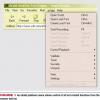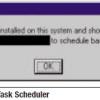The Latest
|
Learning Web Performance Testing[magazine] Sue Bartlett and Meenakshi Rao highlight some common mistakes to avoid when starting Web performance testing, including trying to select a load-testing tool before evaluating your needs, and trying to outsource performance testing for a complex eBusiness application. They convey two important lessons: First, it's vital that you understand your architecture and your Web site's purpose; second, that kind of understanding is difficult to transfer to a third party. |
||
|
Confessions of a Lapsed Academic[magazine] After almost twenty-five years as a professor, Elaine Weyuker left academia for full-time work at AT&T. Here, she shares how industry and academia can both benefit from collaborating. |
Elaine J. Weyuker
June 26, 2002 |
|
 |
A Look at Testing Web Applications with eValid[magazine] When Robert Sabourin set up a testing lab for a major e-commerce Web-based application, he chose eValid from Software Research, Inc., as the tool for use in functional, performance, and load testing of the application. The product did the job at a very reasonable price, and they were able to find some very important bugs well ahead of their target delivery dates. |
|
|
|
A Look at T-VEC's Test Vector Generation System[magazine] Before they started using T-VEC, David Statezni's group was manually creating and running requirements tests and separately creating and running code coverage tests. T-VEC's features allowed them to save time. |
David Statezni
June 26, 2002 |
|
Checking out of the Burnout Ward[magazine] Stefan Jaskiel helps you recognize the signs of job burnout (complacency, difficulty focusing, careless attitude, and helplessness), and offers some strategic interventions. |
Stefan Jaskiel
June 26, 2002 |
|
|
The Downsizing of High-Tech America[magazine] The success or failure of a downsized organization depends on the work force remaining after the storm. Before deciding to change jobs, survivors should carefully analyze their company's situation. Downsizing many be an indicator of poor economic peformance, or it may be just what the company needed in order to turn itself around. Employees who "weather the storm" may discover new opportunities for career advancement hidden among the ruins. |
Stefan Jaskiel
June 26, 2002 |
|
|
The Risk in Risk Management[magazine] What happens when you perceive a future risk, and others don't? Peter de Jager lays out the hazards of being a risk management visionary. |
||
|
|
Why Testers Should Care About Patterns[magazine] Patterns, as described by the architect and theorist Christopher Alexander and his colleagues over the last thirty-five years, are a way of describing problems and customizable solutions. Patterns became popular in the software development field, and they've been applied to testing. Here, Brian Marick explores patterns and problem solving. |
Brian Marick
June 26, 2002 |
 |
A Detour Around Dead-end Bugs[magazine] Show-stopping failures in Web applications are all too common. One serious but easily avoidable failure is the "dead-end" bug, where a user is left staring at a blank screen without any clue about what went wrong. Derek Sisson describes different types of "dead-end" bugs and shows how to avoid them. |
Derek Sisson
June 26, 2002 |
|
The Power Loss Trap[magazine] In order to be effective, Testing must co-exist on a level playing field with Development and Project Management. It cannot be subservient to them. A test lead's authority on a project springs from his or her projected sense of self-confidence in the role, and the Power Loss Trap undermines this authority. Here are a few commonsense ways to protect yourself. |
Matt Leahy
June 26, 2002 |
|
|
On the Cost of Quality[magazine] Technical Editor Brian Lawrence explains four types of costs of quality: prevention, appraisal, internal failure, and external failure. |
Brian Lawrence
June 26, 2002 |
|
|
Beyond Belief[magazine] Technical Editor Esther Derby talks about how unconscious beliefs, filters, and maps influence the way we react to situations and the conclusions we reach. |
||
 |
Know Thy User[magazine] Testing, in its broadest sense, means ensuring that your visionaries and programmers are creating a helpful product that people will actually use. As the two authors of this installment of Bug Report illustrate, understanding how those users will operate your application is more than an exercise in empathy; it's a simple key to avoiding some real usability meltdowns. |
Brian Marick
June 26, 2002 |
|
Thinking About Thinking[magazine] Esther Derby recommends The Logic of Failure and The Thinking Manager's Toolbox. Both authors share the same goal: helping you be a better problem solver. They stress the importance of recognizing the situation you're in, choosing an appropriate problem-solving strategy, and having the right thinking tools. |
||
|
Houston, We Have a Problem[magazine] Errors start with individuals, and a primary job of testers/QA people is to prevent those errors in the first place. But an equally important part of the job is to find them once they are there, understanding that errors will happen. Jon Hagar asks, "What can we do personally, above and beyond the normal day-to-day jobs that we testers and developers have?" |




